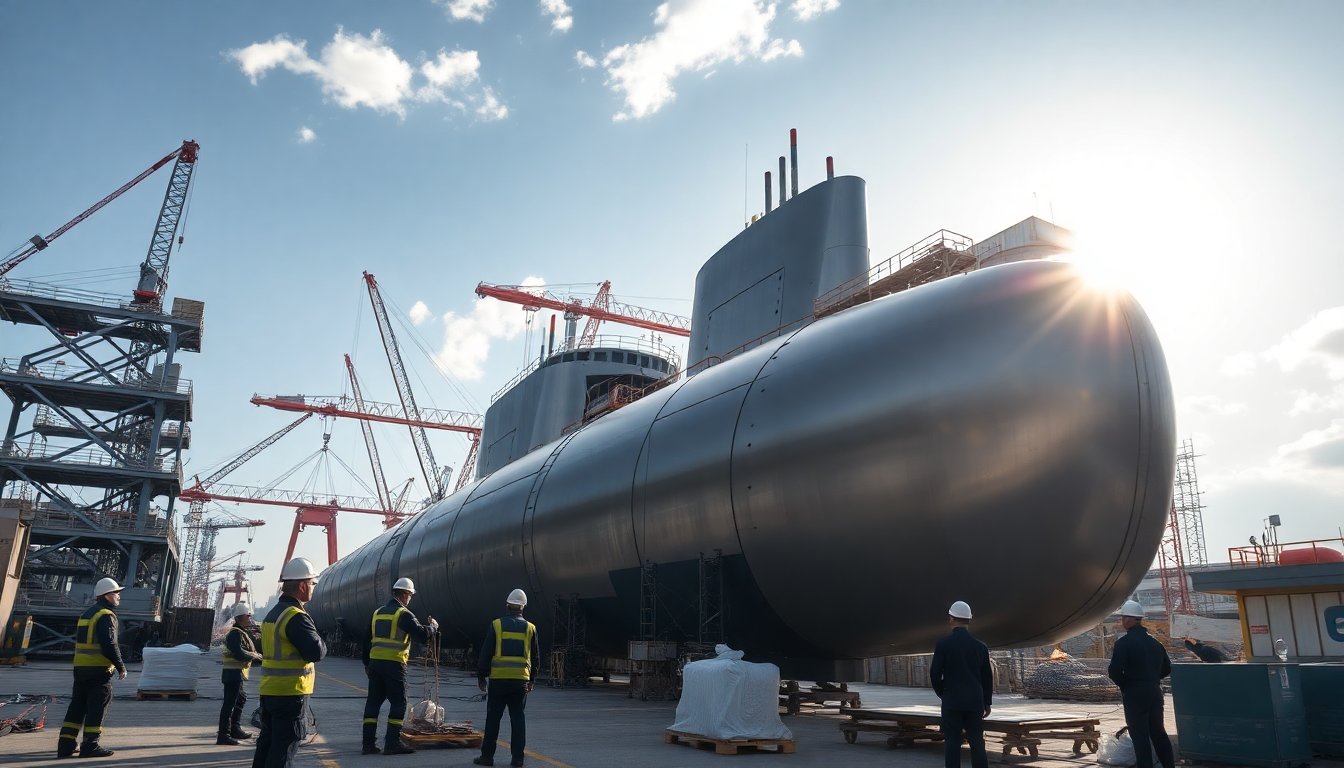Table of Contents
In a landmark announcement, U.S. President Donald Trump has authorized South Korea to construct a nuclear-powered submarine. This decision precedes important discussions with Chinese President Xi Jinping, underscoring the escalating geopolitical dynamics in the region. Trump commended South Korea as a dedicated ally in the global shipbuilding sector, emphasizing the military collaboration between the two nations.
On Thursday, Trump announced via his Truth Social platform, “South Korea will be building its nuclear-powered submarine in the Philadelphia shipyards.” This transition from conventional diesel submarines to advanced nuclear capabilities represents a strategic enhancement for South Korea’s naval operations.
Strengthening the U.S.-South Korea alliance
During a bilateral meeting with South Korean President Lee Jae-myung, Trump stressed the fortification of the military alliance, asserting it is “stronger than ever before.” This endorsement of South Korea’s submarine project aligns with U.S. strategies aimed at bolstering regional defense amid escalating tensions with North Korea and China. While the timeline for the submarine’s construction remains unclear, the implications of this approval are considerable.
Economic agreements and investments
Trump’s announcement coincided with the signing of various economic agreements, including a commitment from South Korea to invest $350 billion in the U.S. economy. This investment will significantly contribute to the American shipbuilding industry and energy sector. In return, the U.S. will reduce tariffs on South Korean exports, fostering a mutually beneficial economic relationship.
Additionally, under the new trade agreement, South Korea has committed to purchasing large quantities of U.S. oil and gas, with projected investments exceeding $600 billion. This economic collaboration not only strengthens military ties but also promotes a robust economic partnership capable of withstanding external pressures.
Concerns and regional dynamics
The decision to permit South Korea to build a nuclear submarine raises concerns regarding its impact on regional stability. South Korea has clarified that its aim is not to develop nuclear-armed submarines but to enhance its capabilities with conventionally armed submarines powered by nuclear energy. Nonetheless, this move is likely to be closely monitored by both North Korea and China, the latter of which already possesses nuclear-powered submarines, adding complexity to the security landscape.
Implications for U.S.-China relations
As Trump prepares to meet with Xi Jinping, the timing of this announcement may heighten tensions between the U.S. and China. The construction of the submarine in Philadelphia, particularly by a South Korean company that acquired the shipyard, symbolizes a deepening of military-industrial ties between the U.S. and its allies. Such developments are critical as they could alter the balance of power in the region.
Furthermore, the Biden administration’s recent agreements with Australia to assist in building submarines further illustrate the U.S.’s commitment to enhancing its allies’ military capabilities. These actions may provoke reactions from China, which perceives the strengthening of U.S. alliances as a direct challenge to its influence in the Asia-Pacific region.
Trump’s approval for South Korea to develop a nuclear-powered submarine marks a significant step in fortifying the military alliance between the two nations. Coupled with substantial economic agreements, this initiative not only enhances South Korea’s defense capabilities but also reaffirms the U.S.’s role as a key player in Asian geopolitics. As the region confronts evolving threats, the collaboration between the U.S. and South Korea will likely be crucial in maintaining stability.


